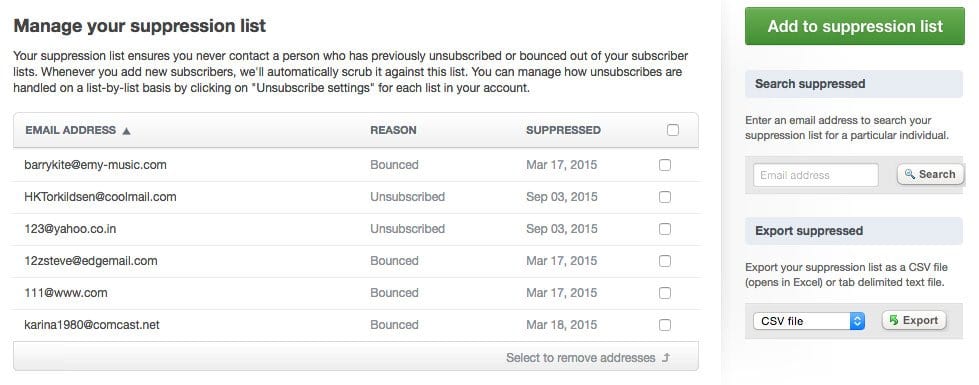Article
Why Using Email Engagement Suppressions Works for Inbox Placement
January 22, 2019

When Refinery29 revamped their newsletters, they increased their active and engaged email audience by 86% in the process. And one element of that success was actually sending less email. Monitoring Refinery29’s email sends, Marigold Engage by Sailthru’s deliverability team noticed a dip in open rates on the Everywhere newsletter, which is the bread and butter of the company’s email marketing program. Suppressions — in other words, removing users from an email list, either permanently or for a certain period — helped turn that around.
Within a few months, Everywhere open rates increased by 2%. Suppressions are meant to drive overall engagement, one of the key metrics Internet Service Providers (ISPs) use to determine sender reputation and thus, inbox placement.
Over time, a long-inactive subscriber can have a negative impact on inbox placement. This may not be immediately apparent. But as months go, if your list isn’t healthy, ISPs will take notice. So while suppressions not only help boost engagement, they’re also beneficial to maintaining the quality and health of a list.

How Suppressions Increase Engagement & Inbox Placement
As users open, read and delete messages, Gmail is watching. They’re curious how long people spend reading messages and which ones they forward on or reply to. On the negative side, they’re also interested in which messages people move to different folders or mark as Spam. ISPs, especially Gmail, are looking to make their users happy. As a result, they deliver mail that they see their users engaging with.
However, Email Service Providers (ESPs) don’t have access to the same metrics. For companies like Marigold Engage by Sailthru, opens and clicks are the best indicator of an inboxing issue. Targeting users who have been engaging with the mail stream helps to maintain healthy inboxing or mitigate any inboxing issues.
It helps to suppress those people who aren’t engaging, at least for a certain period of time. Not opening or reading messages, those users are dead wood. But they haven’t unsubscribed and suppressions can help make sure they don’t. We also recommend encouraging people to update their preferences, letting them dictate when and how often they hear from you.
Spam traps, or email addresses that don’t belong to active or valid users, are inevitable on lists, as some can occur due to something as simple as a typo. However, if you come across a spam trap, time-based suppressions will help maintain the health and quality of your list.
Sending email to a spam trap can hurt your reputation, damaging your deliverability in the long run. That said, factoring this into your suppression strategy is key, as it helps keep your list healthy and spam trap-free.
Click here to learn more about Marigold Engage by Sailthru’s deliverability offerings.
The State of Brand Loyalty in the U.S. in 2023
Related



